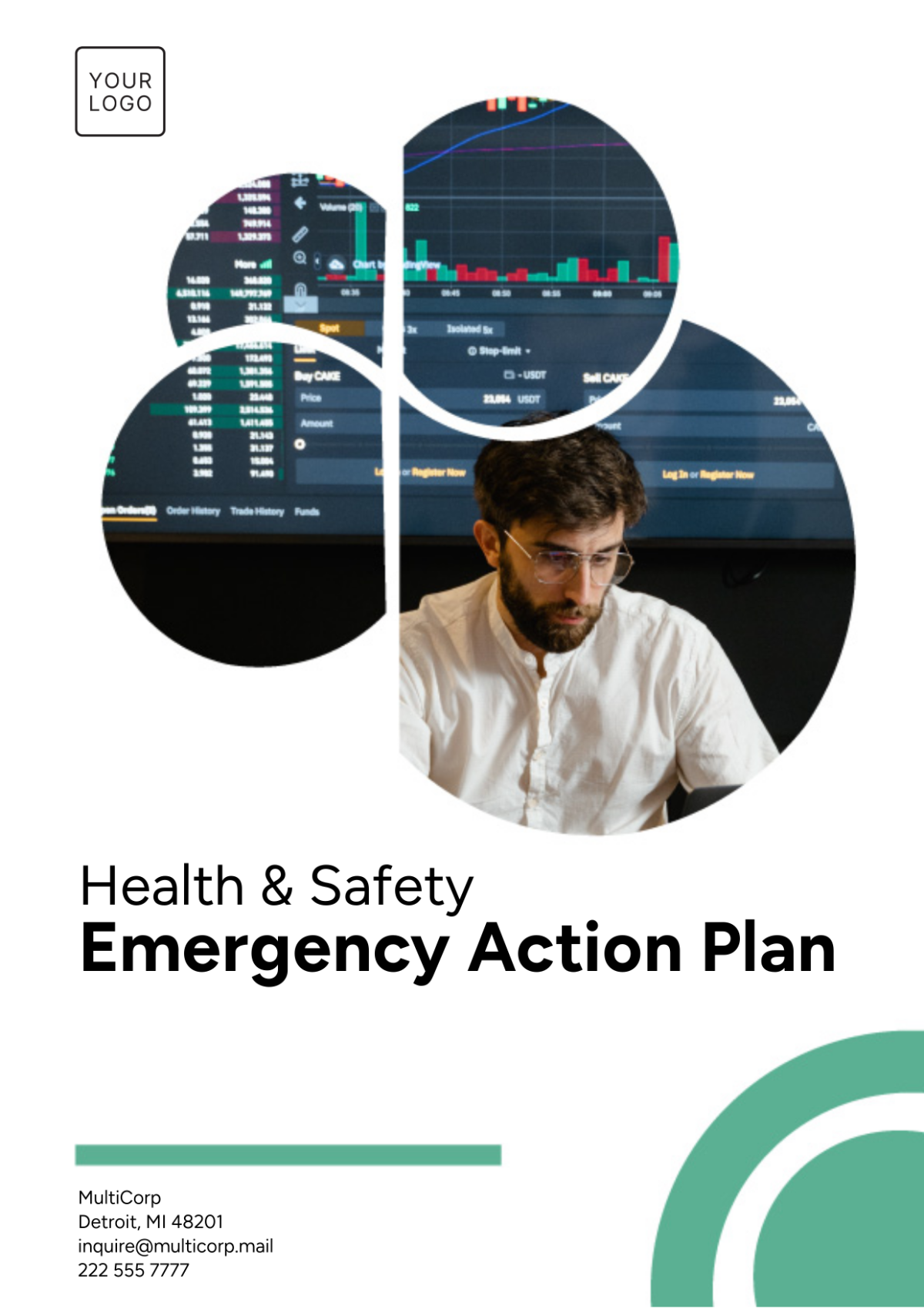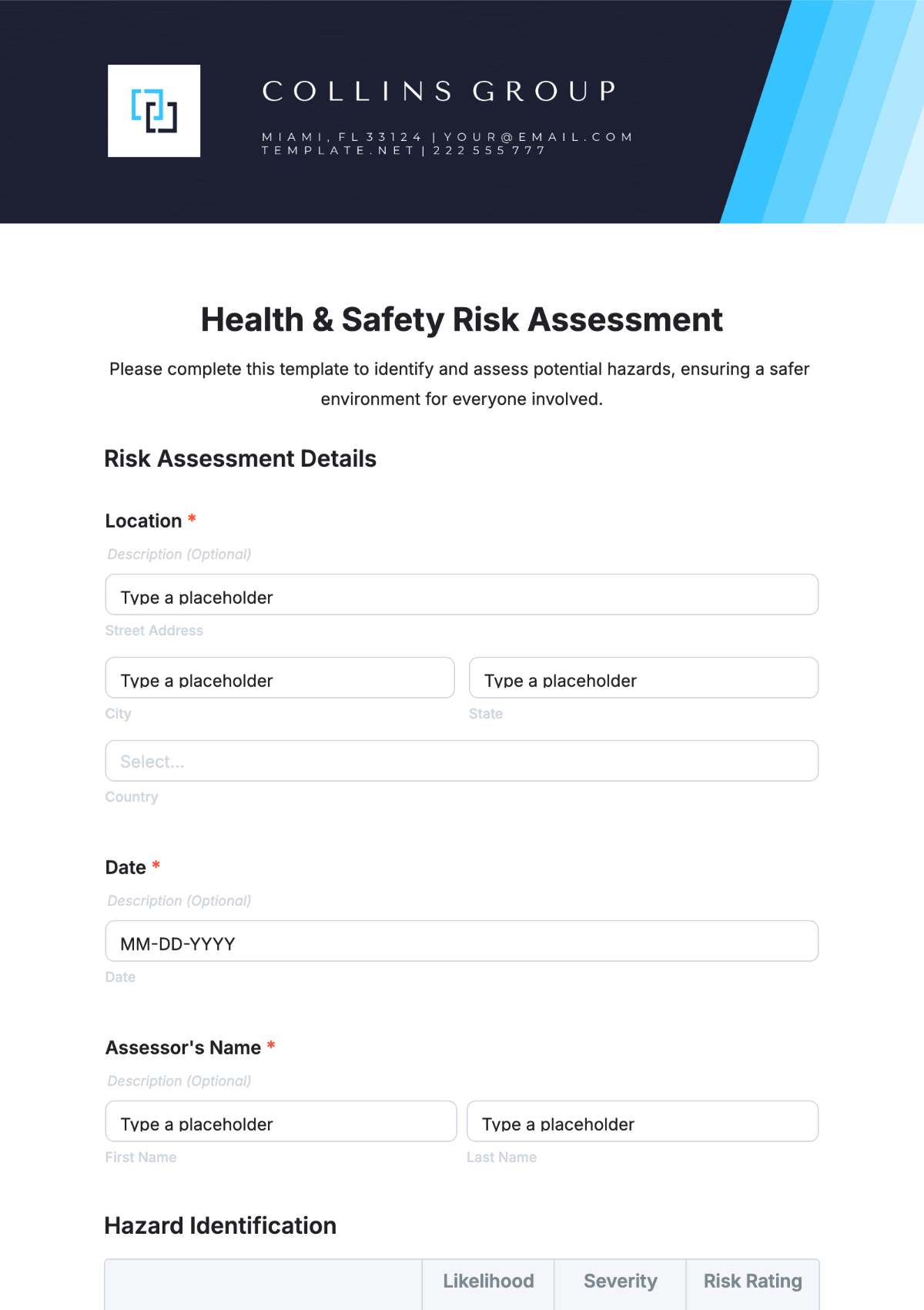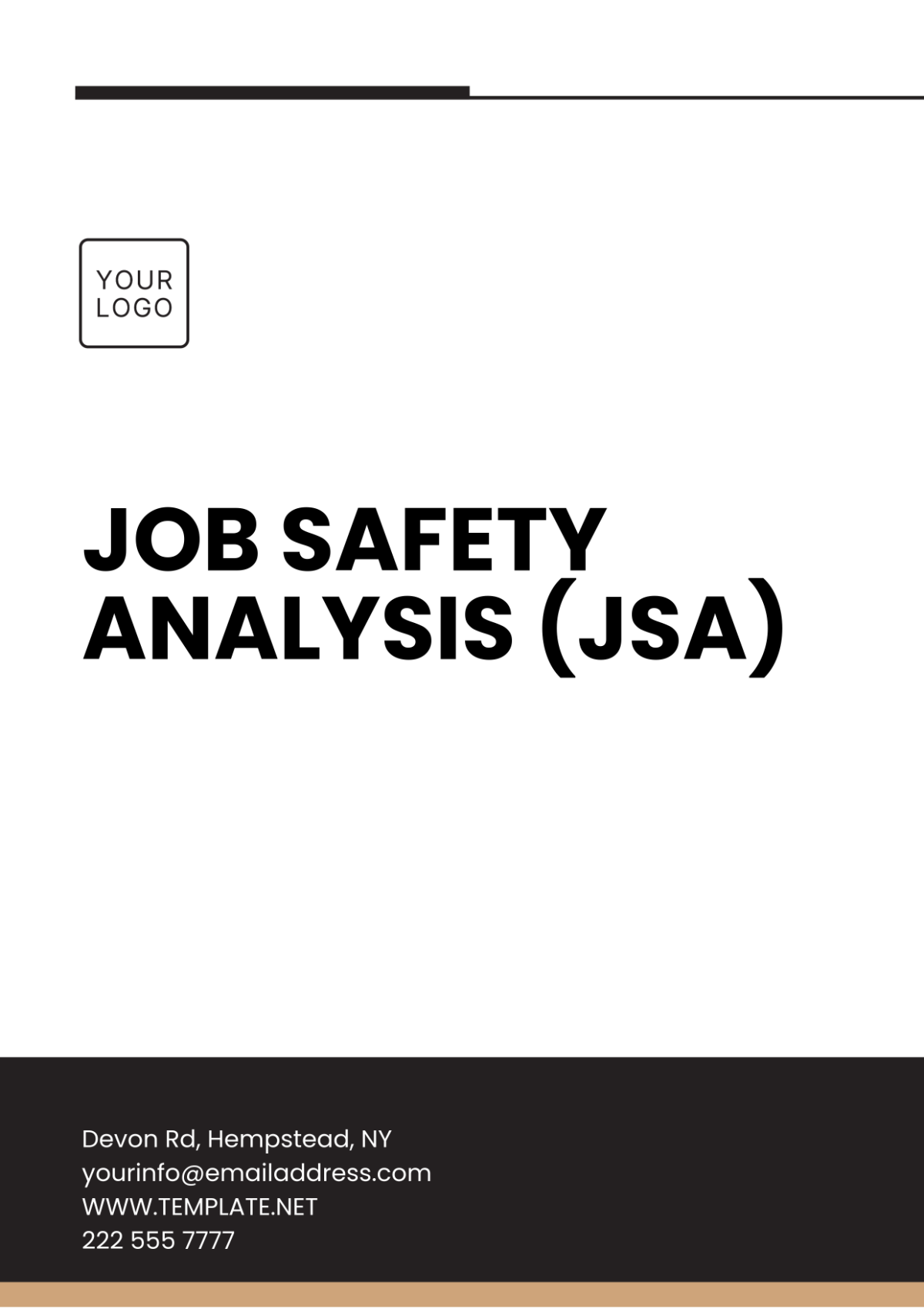Health & Safety Communication User Guide
Introduction
Welcome to our Health & Safety Communication User Guide. This document is an essential resource designed to guide you through our organization’s health and safety communication systems. It serves as a comprehensive manual for understanding, accessing, and effectively utilizing the various channels and tools we have in place for health and safety communication.
Purpose of the User Guide
The primary purpose of this guide is to ensure that every member of our team, regardless of their role or level within the organization, is fully informed and equipped to participate in our health and safety processes. This guide will walk you through the key aspects of our health and safety communication, from understanding basic safety messages to reporting and responding to health and safety concerns.
Importance of Effective Communication
Effective communication is the cornerstone of a robust health and safety culture. Clear, consistent, and accessible communication ensures that all employees are aware of potential hazards, understand the necessary precautions, and know how to respond in case of an emergency. It empowers everyone to contribute to a safe working environment and fosters a culture of proactive safety management. This guide is a vital part of our commitment to maintaining and enhancing a safe and healthy workplace through effective communication.
Understanding Health and Safety Messages
Effective health and safety management hinges on a clear understanding of key terms and messages. This section explains the common health and safety terminology used within our organization and guides you on how to interpret and understand various safety signals and warnings.
Common Terms
Risk Assessment: The process of identifying potential hazards and evaluating the risks associated with them. It determines the necessary measures to control or eliminate the risks.
PPE (Personal Protective Equipment): Specialized clothing or equipment worn by employees for protection against health and safety hazards. This includes items like safety helmets, gloves, eye protection, and safety footwear.
MSDS (Material Safety Data Sheet): A document that provides information on the properties of a hazardous chemical and its handling, storage, and emergency measures.
Ergonomics: The study of people's efficiency in their working environment. It involves designing or arranging workplaces, products, and systems so that they fit the people who use them.
LOTO (Lockout/Tagout): Safety procedures used to ensure that dangerous machines are properly shut off and not able to be started up again prior to the completion of maintenance or repair work.
Incident Reporting: The process of formally documenting any workplace incidents or accidents, including near-misses, injuries, or property damage.
Safety Signs and Symbols
Indicates a hazardous situation which, if not avoided, could result in death or serious injury. Examples include fire-related signs, danger labels. |
Used for cautionary signs to indicate a potential risk of injury. Common in warning labels. |
Indicates safety-related information, such as emergency exits or first-aid equipment. |
Provides mandatory instructions, such as the need to wear PPE. |
Accessing Health and Safety Information
Accessing accurate and up-to-date health and safety information is essential for all employees. This section provides guidance on where to find this information and lists the contact details of health and safety representatives and departments.
Where and How to Find Information
Company Intranet: The intranet serves as a central repository for all health and safety documentation, including policies, procedures, training materials, and safety alerts. Access this regularly for the latest updates.
Notice Boards: Key health and safety information, including notices, updates, and upcoming training sessions, are regularly posted on notice boards in common areas.
Health and Safety Manuals: Printed manuals are available which provide detailed information on specific health and safety topics. These can be found in departmental offices or requested from the health and safety department.
Training Sessions and Workshops: Regularly scheduled training sessions provide valuable information on various health and safety topics. Keep an eye on internal communication channels for upcoming sessions.
Email Communications: Important updates and reminders about health and safety are often sent out via email. Ensure you are subscribed to receive these communications.
Contact Details
Department | Contact Information | Area of Responsibility |
Health and Safety Office | [Email]/[Phone] | General health and safety inquiries, policies, and documentation. |
Emergency Response Team | [Email]/[Phone] | Immediate response to emergencies and urgent safety concerns. |
Reporting Health and Safety Issues
Reporting health and safety issues promptly and accurately is a crucial responsibility of every employee within our organization. This section provides detailed instructions on how to report health and safety concerns or incidents and emphasizes the importance of timely and accurate reporting.
Reporting Procedure
Identify the Issue: Clearly identify the health or safety concern or incident. This could range from a potential hazard to an actual accident or injury.
Immediate Action: If the issue poses an immediate danger, take any necessary action to ensure your safety and that of others, such as activating an emergency alarm or moving to a safe area.
Contact Supervisor or Safety Officer: Report the issue to your supervisor or the designated safety officer as soon as possible. For more serious incidents, this should be done immediately.
Complete an Incident Report Form: Fill out an incident report form, available from the health and safety department or the company intranet. Provide a detailed description of the incident or concern, including the date, time, location, and any witnesses.
Submit the Report: Submit the completed form to the health and safety department. This can typically be done electronically via email or through a dedicated portal on the intranet.
Follow-Up: The health and safety department will follow up on the report, which may include an investigation or additional measures to prevent future occurrences.
Importance of Reporting
Preventing Escalation: Prompt reporting can prevent incidents from escalating and reduce the potential for harm.
Legal and Compliance Requirements: Timely and accurate reporting is often a legal requirement and ensures compliance with workplace health and safety regulations.
Data Collection for Improvement: Each report contributes valuable data, helping to identify trends and areas for safety improvements within the organization.
Fostering a Safety Culture: Active participation in reporting reinforces a culture of safety and demonstrates a commitment to maintaining a safe work environment for all.
Using Health and Safety Communication Tools
In our commitment to maintaining a safe work environment, understanding how to effectively use health and safety communication tools is essential. This section provides instructions on using specific tools such as emergency alert systems and health and safety apps, along with best practices to ensure their effective use.
Using Emergency Alert Systems
Familiarization: Ensure you are familiar with the sound and visual signals of the emergency alert system. Know what different alerts mean and the appropriate actions to take for each.
Immediate Response: When an alert is issued, respond immediately according to the instructions provided. This may involve evacuating the area, seeking shelter, or performing specific safety actions.
Updating Contact Information: Keep your contact information updated in the system to ensure you receive all alerts, especially if the system uses text messages or emails.
Test Participation: Actively participate in scheduled emergency alert system tests to ensure the system is working correctly and you are prepared for a real emergency.
Using Health and Safety Apps
App Installation: Download and install the designated health and safety app on your smartphone or tablet, as provided by the organization.
Account Setup: Set up your account, including your role in the organization and any relevant health information that could be crucial in an emergency.
Regular Updates: Regularly update the app to ensure you have access to the latest features and safety information.
Active Use: Use the app actively to access health and safety resources, report concerns, and receive notifications about safety updates or training.
Best Practices
Regularly check that the emergency alert system and health and safety apps are functioning correctly.
Regularly review the information and updates provided through these tools to stay informed about health and safety matters.
Providing Feedback for Continuous Improvement
Feedback from employees is a crucial component of our health and safety communication system, fostering continuous improvement and adaptation. This section outlines how employees can provide feedback on health and safety issues and communications, as well as the process for suggesting improvements to our communication system.
Providing Feedback
Feedback Channels: Employees can provide feedback through various channels, including suggestion boxes, dedicated email addresses, or during regular health and safety meetings.
Constructive and Specific: When providing feedback, be specific and constructive. Clearly state the issue or aspect of the communication you are commenting on, and, if possible, suggest potential improvements.
Regular Surveys: Participate in regular health and safety surveys. These surveys are designed to gather employee opinions and suggestions on our health and safety practices and communication.
Direct Communication: Feel free to communicate directly with health and safety representatives or supervisors to provide immediate feedback or suggestions.
Suggestion Procedure
Formal Proposal: For substantial suggestions, consider submitting a formal proposal outlining the perceived issue and proposed improvement.
Discussion Forums: Participate in discussion forums or meetings that focus on health and safety communication. These forums provide an opportunity to voice your ideas and collaborate on improvements.
Follow-Up: The health and safety team will review all suggestions and provide feedback or follow-up actions. Employees are encouraged to inquire about the status of their suggestions.
Training and Resources
Ensuring all employees have access to training and resources is key to maintaining a well-informed and safe working environment. This section provides information on available health and safety training programs and additional resources for further learning and information.
Training Program | Frequency | Duration | Target Audience |
General Workplace Safety | Annually | 2 hours | All new employees |
Handling Hazardous Materials | Annually | 3 hours | Maintenance staff, lab technicians |
Fire Safety and Evacuation Training | Annually | 2 hours | All employees |
First Aid and CPR | Every two years | 4 hours | Volunteer first responders |
Resource Category | Available Resources | Location/Contact Information |
First Aid Kits | Standard first aid kits | Located in each department/common areas |
Safety Equipment | Protective gear (gloves, helmets, goggles, etc.) | Stored in the equipment room/onsite at specific workstations |
Emergency Contacts | List of emergency contact numbers | Posted in common areas and on the intranet |
Mental Health Resources | Counseling services, stress management guides | Details available through HR and the wellness program |
FAQ
This section addresses some of the most common questions employees have regarding health and safety communication within our organization. These FAQs are designed to provide quick, clear answers to help enhance understanding and compliance with our health and safety protocols.
Q: How do I report a health and safety concern in the workplace?
A: Health and safety concerns can be reported directly to your supervisor, health and safety officer, or through our internal reporting system, such as the company intranet or a dedicated email address. For immediate dangers, use the nearest emergency alert system.
Q: Are there specific times when health and safety training is offered?
A: Yes, health and safety training sessions are scheduled throughout the year. The schedule is posted on the company intranet and notice boards. Additionally, some online training modules can be completed at any time.
Q: What should I do if I don’t understand a safety sign or notice?
A: If you’re unsure about the meaning of a safety sign or notice, please ask your supervisor or a health and safety representative for clarification. It's crucial to understand all safety signs to ensure your safety and that of others.
Q: Is health and safety training mandatory for all employees?
A: Yes, certain health and safety training sessions are mandatory for all employees, especially those related to emergency procedures, fire safety, and workplace-specific hazards. Attendance is tracked and often legally required.
Q: How can I provide feedback on health and safety matters?
A: Feedback can be provided through multiple channels, including direct communication with your supervisor, health and safety meetings, suggestion boxes, and dedicated feedback surveys.
Q: Where can I find information about first aid procedures and emergency contacts?
A: This information is available on the company intranet, in health and safety manuals, and on notice boards in common areas. Emergency contact numbers are also posted near phones and in other strategic locations.

















































